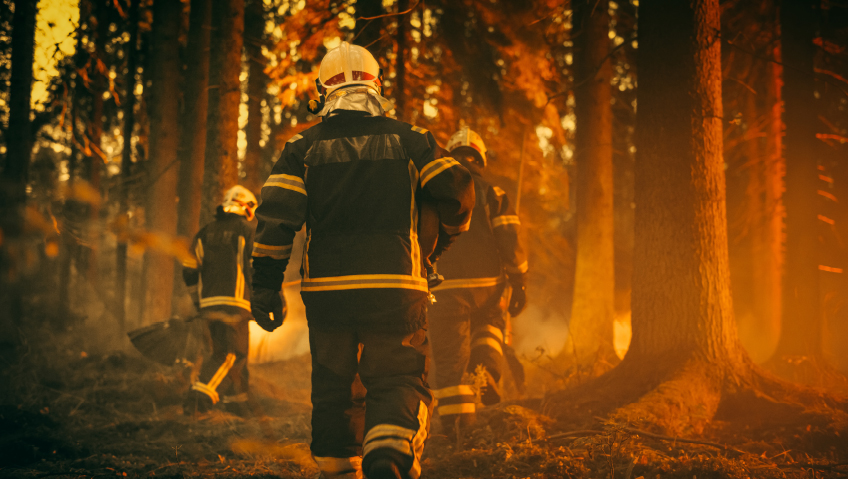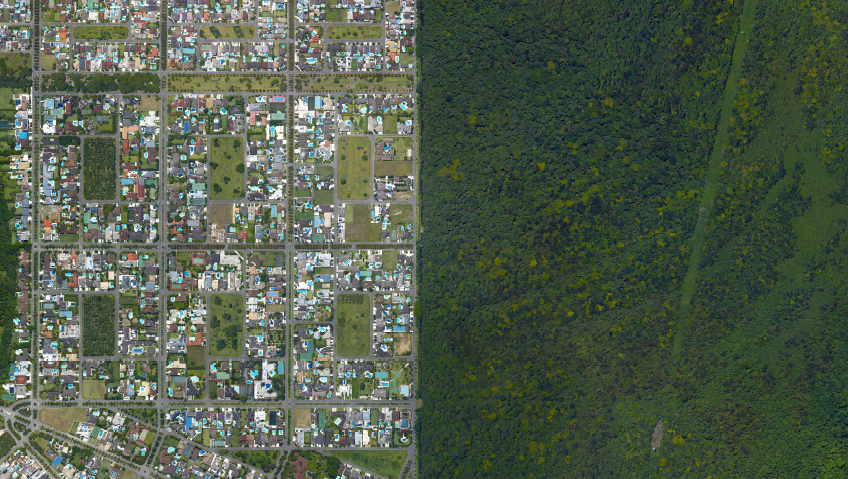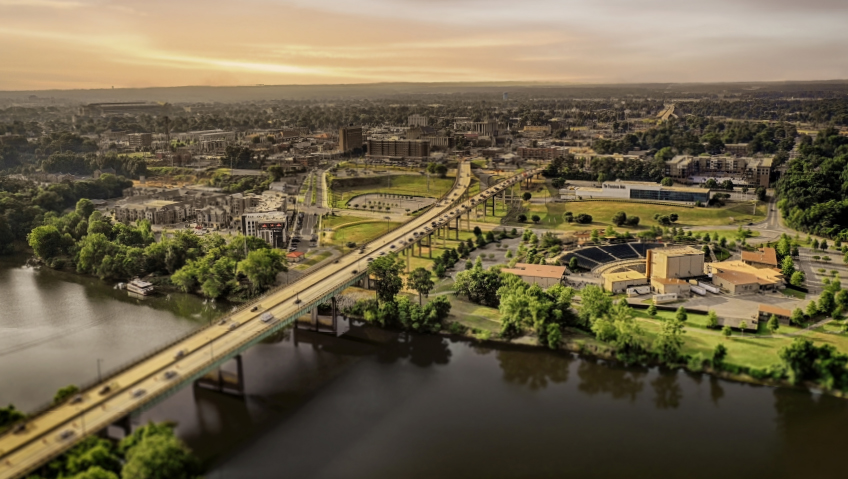Every summer, forest fires make headlines across North America, destroying millions of acres of trees and posing sudden and catastrophic threats to entire towns. In response, millions of dollars are spent to deal with the increasing risk of more significant wildfires due to climate change bringing longer, drier summers.
With an incredible 19 million hectares burned—more than six times the historical average—Canada saw its worst wildfire season ever in 2023, according to the Canadian Climate Institute’s March article, Canada needs to get ready for a future fraught with fire: How can the forest sector respond? Smoke from the wildfires affected millions of people, with thousands being evacuated, hundreds of homes lost, and years for ecosystems and species to recover.
Wildfires hurt the economy as well. Even though the full extent of the damage has not yet been determined, last year’s unprecedented fires had a major effect on the forest industry, which directly employs more than 200,000 people and accounts for 1.7 percent of Canada’s GDP, particularly in rural and remote communities, says the Climate Institute.
Seasons of severe wildfires also affect people’s means of subsistence and Canada’s capacity to deliver forest products. Up to 40 forestry enterprises closed their doors in British Columbia during the 2017 wildfires, and Canada’s lumber production in June and July of 2023 was 20 percent less than the average for the preceding five years during those same months. Even a brief increase in lumber costs brought on by a decrease in the supply of wood may have a detrimental effect on house affordability and building; the price of timber futures increased by almost 20 percent in June and July of 2023 as wildfires spread throughout the nation.
Wildfires cause problems for the forest products supply chain and transportation backlogs, which can halt trade. Companies suffer revenue losses due to these disruptions, and forestry workers may also experience income loss.
According to the Canadian Climate Institute’s modelling in a 2022 report, Damage Control: Reducing Climate Impacts, if nothing is done, the effects of climate change on forestry—which include wildfires interacting with pests and other disturbances—will bring about 32,000 fewer employment opportunities and $4 billion in lost export earnings by the end of the century. These are significant numbers that, if additional actions aren’t taken, could put communities that depend on forestry in peril.
What can be done? According to a Bloomberg report from last fall, a recent study found that restored and preserved forests have the capacity to store carbon emissions equal to 50,000 coal-fired power stations’ annual emissions, making them a vital component in the effort to slow down global warming. However, it’s not just about planting more trees; massive monoculture plantations are often the focus of large-scale efforts, but these can be more detrimental than beneficial as they disrupt natural ecosystems, reduce biodiversity, and become forests at higher risk of future fires.
Additionally, plantations that grow trees are less effective in storing carbon. According to a recent study published in Frontiers in Forests and Global Change, mixed forests typically store 70 percent more carbon than monocultures.
Worldwide, monocultures are prevalent and largely the outcome of agriculture’s transition to a single, high-yield crop that can only be grown in specific environments, according to Planet Wild’s piece from last year, Monoculture, “Green Deserts” and 5 ways to make an impact. Numerous economic advantages have resulted from this technique for farmers, including increased planting and harvesting efficiency, greater predictability, and the capacity to create and deploy more specialized technology. The rising need for more food and other resources, like wood, is being met by monoculture—but it’s becoming clear what the true effects of monoculture plantations are.
Five billion hectares, or 38 percent of the world’s land area, are thought to be devoted to agriculture today. Due to the increasing demand for resources brought about by the doubled world population since the 1960s, large tracts of forest, grassland, wetland, and other vital ecosystems have been removed to make room for huge crop cultivation, which has had a significant effect on biodiversity worldwide. When huge numbers of one or two crops are brought into an area, natural ecosystems struggle to survive and prosper because non-native plant species and crops can outcompete and replace local species. Replanting the same crop species, meanwhile, reduces the soil’s capacity to cycle nutrients and water, hampering plant growth and reducing soil fertility.
Fortunately, there are several ways to reduce the harm that monocultures inflict upon biodiversity globally, including supporting sustainable agriculture via purchasing produce as locally as possible. Knowing what items are produced on monoculture plantations can also help consumers make more thoughtful decisions.
According to Global Forest Watch, there were a total of 138 million hectares’ (Mha) tree cover lost from fires globally and 350 Mha from all other causes of loss from 2001 to 2023. The year with the most tree cover loss due to wildfires during this period was 2023, with a staggering 11.9 Mha lost to fires—42 percent of all tree cover loss for that year.
These area measurements feel overwhelming and hard to even grasp in terms of scale, and it certainly can’t be fought on the individual scale by simply doing one’s part as a global citizen. More large-scale action is desperately needed, particularly by governments and the forestry industry, who bear real responsibility for instilling much needed change.
“Extreme wildfires”—catastrophic fires that are out of human control and suppression—are primarily caused by land use policies, plans, and governance decisions, and are also influenced by changes in the population and more unfavourable weather patterns brought on by climate change, according to a 2020 article from World Bank Blogs, How governments can take action to limit extreme wildfires.
Some suggestions for revision include reorienting land use policies and incentives to promote better land-use planning and management. This means taking steps like doing away with unfavourable incentives that promote actions such as using fire to clear forest land for other uses, defining land tenure rights to prevent careless fire use or the use of fire to obtain access to land, and enhancing sectoral coordination to prevent conflicting practices.
Across the globe, managing wildfires is frequently regarded as an emergency rather than a regular aspect of landscape maintenance, so governments must strike a balance between funding fire suppression and efforts to avert wildfires, such as cutting fuel loads, re-establishing natural fire cycles in ecosystems, and instructing companies and people who use fires in how to do so safely.
Finding gaps in response and prevention capabilities, as well as using data collection and analysis to better understand the causes of wildfires, is essential. Governments can evaluate wildfire management techniques using quality data to determine what works and what doesn’t. And even though these kinds of wildfire prevention measures might not receive as much attention as suppression efforts, they are crucial if we are to meet the targets of the UN’s Sustainable Development Goals, the Paris Climate Agreement, and the post-2020 biodiversity framework as well as reduce the social, economic, and ecological costs of extreme wildfires.
There is increasing demand on governments, the forestry sector, and Indigenous knowledge holders and practitioners to adopt and scale up strategies to stop wildfires and prepare for their expanding effects, says the Climate Institute. Coordinated, society-wide efforts are needed to mitigate the growing threat of catastrophic wildfires, and while reducing carbon emissions is essential to preventing global warming and lessening the frequency of extreme weather events, preparing for a future with more frequent fire is now required.
It is imperative that governments, communities, and forestry companies evaluate the risk that wildfires pose to the workforce and infrastructure now and in the future, and that they continue funding wildfire emergency planning and response efforts. Governments can manage forests more effectively by incorporating climate adaptation, and wildfire danger can be decreased, for instance, by changing reforestation regulations and recommendations to plant a more varied mix of species, including those with fire-resistant qualities, and by relocating some tree populations to more climatically suited locations.
The 2023 wildfire season brought to light the critical need for Canada’s forest sector—and indeed those around the world—to strengthen their resilience. Governments and business leaders must act proactively as the effects of climate change worsen in order to protect the world’s forests and the livelihoods they support.
Although fires are naturally occurring disturbances that can support the health and regeneration of many forest ecosystems, climate change-related hotter and drier weather will increase the frequency, severity, and difficulty of managing wildfires. Climate projections give rise to concerns about increased fire intensity and surface area in the coming years, especially from rising temperatures, dropping air and soil humidity, and decreased water availability. Fortunately, through education, lobbying, and continuing to press for change—particularly from governments—there is some hope on the horizon.






